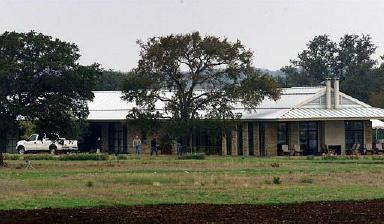OH, YEAH?
Glass Houses
Claim: E-mail compares
Status: True.
Example: [Collected via e-mail, 2007]
| LOOK OVER THE DESCRIPTIONS OF THE FOLLOWING TWO HOUSES AND SEE IF YOU CAN TELL WHICH BELONGS TO AN ENVIRONMENTALIST. HOUSE # 1: A 20-room mansion (not including 8 bathrooms) heated by natural gas. Add on a pool (and a pool house) and a separate guest house all heated by gas. In ONE MONTH ALONE this mansion consumes more energy than the average American household in an ENTIRE YEAR. The average bill for electricity and natural gas runs over $2,400.00 per month. In natural gas alone (which last time we checked was a fossil fuel), this property consumes more than HOUSE # 2: Designed by an architecture professor at a leading national university, this house incorporates every "green" feature current home construction can provide. The house contains only HOUSE # 1 (20 room energy guzzling mansion) is outside of Nashville, Tennessee. It is the abode of that renowned environmentalist (and filmmaker) Al Gore. HOUSE # 2 (model eco-friendly house) is on a ranch near Crawford, Texas. Also known as "the Texas White House," it is the private residence of the President of the United States, George W. Bush. So whose house is gentler on the environment? Yet another story you WON'T hear on CNN, CBS, ABC, NBC, MSNBC or read about in the New York Times or the Washington Post. Indeed, for |
Origins: This e-mail comparison between the homes of President
| |
According to the Associated Press, the Gore's 10,000 square foot Belle Meade residence consumes electricity at a rate of about
The Prairie Chapel Ranch ranch home owned by
Geothermal heat pumps located in a central closet circulate water through pipes buried 300 feet deep in the ground where the temperature is a constant 67 degrees; the water heats the house in the winter and cools it in the summer. Systems such as the one in this "eco-friendly" dwelling use about 25% of the electricity that traditional heating and cooling systems utilize.
A 25,000-gallon underground cistern collects rainwater gathered from roof runs; wastewater from sinks, toilets and showers goes into underground purifying tanks and is also funneled into the cistern. The water from the cistern is used to irrigate the landscaping surrounding the four-bedroom home. Plants and flowers native to the high prairie area blend the structure into the surrounding ecosystem.
Constructed from a local limestone, the house has eight rooms in a long, narrow design to take advantage of views and breezes. A porch
 stretches across the back and both ends of the house, widening at one end into a covered patio off the living room.
stretches across the back and both ends of the house, widening at one end into a covered patio off the living room.The tin roof of the house extends beyond the porch. When it rains, it's possible to sit on the patio and watch the water pour down without getting wet. Under a gravel border around the house, a concrete gutter channels the water into a 25,000-gallon cistern for irrigation. In hot weather, a terrace directly above the cistern is a little cooler than the surrounding area.
Wastewater from showers, sinks and toilets goes into purifying tanks
The Bushes installed a geothermal heating and cooling system, which uses about 25% of the electricity that traditional heating and air-conditioning systems consume. Several holes were drilled 300 feet deep, where the temperature is a constant
The features are environment-friendly, but the reason for them was practical — to save money and to save water, which is scarce in this dry, hot part of Texas.
Last updated: 28 March 2007





0 Comments:
Post a Comment
<< Home